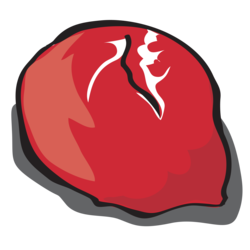AKA: Joue (French), Cachet (Spanish), Mejilla (Spanish), Guancia (Italian)
Primal: Head (US)
Cooking Methods: Braise
Fat Content: Low
Price: Budget

As its name clearly reflects, the Cheek cut is taken from the facial muscles of a cow. Since cows graze several times a day, this is a part that receives a great deal of physical exercise, resulting in toughened up muscles. The typical weight of a Cheek ranges around ¾ -1 lbs (340-450g).
One of the major challenges in cooking the Cheek is its toughness due to which it takes several hours of cooking to soften up. The best way to cook this piece is to utilize the slow, moist cooking methods like stewing or braising, which not only help in breaking the fiber down but also infuse amazing flavor into the dish by converting the connective tissues and fat into gelatin. The connective tissue running in the middle of this cut can be got rid of by slicing it like a fish filet. The Cheek is increasingly being used in French bistros as an important ingredient of several delicacies. Seasonings like thyme, cloves, bay leaves, chives and garlic help enhance the meat’s flavor.
Cheek is one of the facial muscles of the cow that appears to be very meaty and is identified by the presence of a white connective tissue running through it.
The word ‘cheek’ comes from Old English words ‘ceace’ or ‘cece’, which mean ‘jaw’ and ‘jawbone’. In the later years of Old English, the words were also used to define ‘the fleshy wall of the mouth’.
In the past, Beef Cheek was only eaten by underprivileged people who could not afford the superior cuts of meat. In present times, however, food enthusiasts see the Cheek as an important ingredient of specialty cuisines.
Popular Dishes: Braised Meat, Stew, CasseroleThis information about Cheek was sourced from our meat cut app

